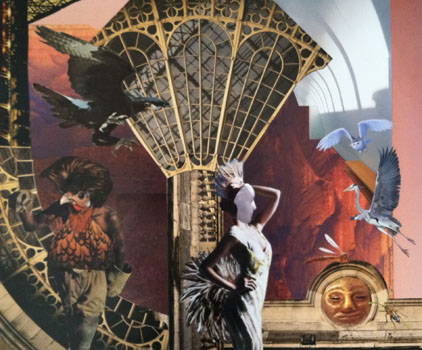I find when an artist has worked at his or her craft for a minimum of six years there’s a sophistication that newer artists haven’t developed yet. To become an artist is a process, a slow step-by-step developing of skills. There are no shortcuts. It’s the ability to learn what works and what doesn’t. The simple truth is, an artist has to put in the time.
For me, good skills are important, but having a point of view, a distinguishable voice carried through the whole body of work is what determines one artist from another. It’s in the power of seeing the world with a new twist that gives art its energy, its uniqueness. When I walk into a gallery I want to see work from an artist that has a consistent theme. I want to see what intrigued the artist to this subject. Like a novel, I want the work to tell me a story. I want the work to take me along with its obsessive need to tell me something I didn’t know.
a consistent theme. I want to see what intrigued the artist to this subject. Like a novel, I want the work to tell me a story. I want the work to take me along with its obsessive need to tell me something I didn’t know.
The truth is, I don’t want to see the same idea repeated in a series that doesn’t take me anywhere except to rehash a tired idea. I think this is why I stopped painting cityscapes ten years ago. I became bored with the sameness of an idea that didn’t evolve into anything more insightful. Again, it’s like a novel where I don’t feel connected to the main character and have no interest in the outcome of the story.
I realize the word “series” implies there’s a beginning and end to an idea. A better concept would be a “serial” of work, which is a continuous body of work. I used to watch the soap operas on TV because of their ongoing storylines that captured my interest and took me along with all the plot changes. As an artist, I also want the people who follow my work to be part of my exploration. So when I say a series of work, I’m talking about a theme that grows beyond the original idea and still has the power to intrigue its audience.